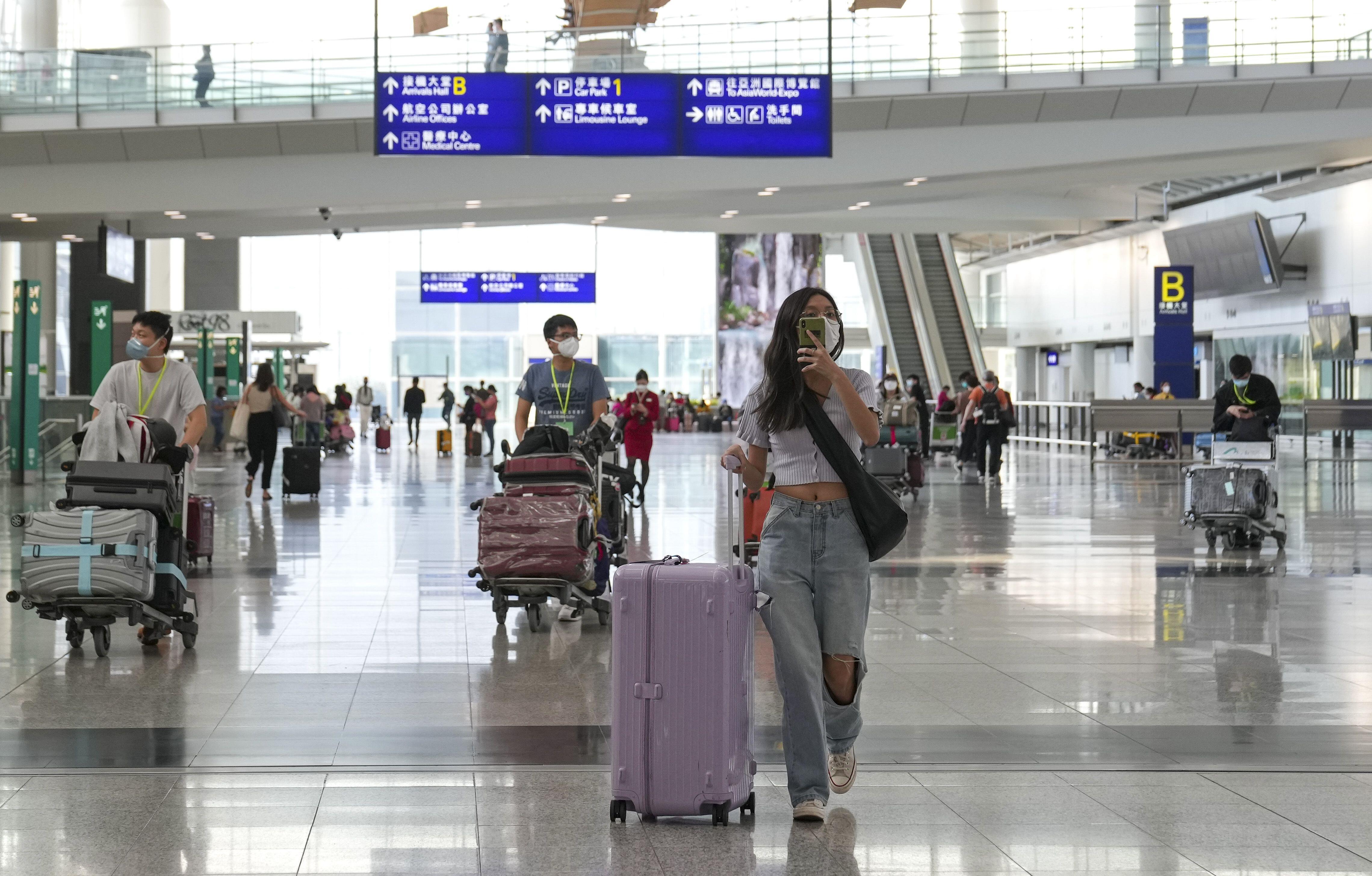
While the pandemic decimated the industry, few airports have been pummeled to the extent of Hong Kong International (HKG) in recent years.
After the severe social unrest in 2019 that rocked the Hong Kong special administrative region (SAR) to its core, highly restrictive and repeated COVID lockdowns, alongside the relocation of many firms and talent to competing Asian cities like Singapore, have only added fuel to the fire that that the post-pandemic HKG would emerge as a shadow of its former self.
A steady downbeat of data has only perpetuated the bad news. Comparisons between November 2019 and 2022 reveal total departure seats down by 74.8%, while the number of direct destinations has fallen from 154 to 74 over the same time period. The seat decline has seen the airport drop from the 18th largest in the world by capacity three years ago to 130th today.
In addition, the number of airlines serving HKG has nearly halved from 84 to 47. American Airlines, Jetstar Asia, Qantas and SAS Scandinavian Airlines are just some of the operators that are yet to return. Meanwhile, hometown hub carrier Cathay Pacific’s departure seats in November 2022, where it still controls 52% of the market, are 39% lower than 2019 levels.
However, while the headlines paint a picture of a hibernating giant, the reality has been anything but idle.
With the brisk rise of e-commerce, HKG has cemented its position as the world’s busiest cargo airport with 4.9 million tons in its 2021/22 fiscal year.
The airport is also in the final stages of completing a $18 billion three-runway system expansion project by 2024, which includes an expansion of terminal two, a new baggage handling system, people mover and reclamation of 650 hectares of land.
Elsewhere, $40 billion is being invested on renovating the original 25-year-old terminal one, SkyCity—the largest entertainment and retail complex of its kind at an airport in the world—alongside technological upgrades, additional city airport check-in terminals, and a new bridge connecting HKIA with the rest of the Greater Bay Area.
When complete, the capacity will swell to allow 120 million passengers and 10 million tons of cargo annually by 2035, the airport forecasts.
“We feel confident that traffic will come back—it’s just a matter of time,” HKG executive director for airport operations Vivian Cheung said in an October interview at Routes World 2022.
Since Hong Kong's government eliminated the hotel quarantine restrictions policy to "0+3" days of self-monitoring and avoiding some venues, like restaurants, green shoots of recovery are taking root. “We are now at 15% capacity recovery. Before June, we were between 2-4%. The demand is there, but the supply is slow,” Cheung said.
She offered British Airways (BA) as proof of demand returning faster than forecast. “They originally told us that they will not come back with additional service until next season," Cheung said. "But when they analyzed the route demand and profitability, they decided to add flights back in December.”
BA plans to resume flights to Hong Kong from Dec. 19 with a daily service from London Heathrow (LHR) using Boeing 787-9s.
Cheung said that the airport does not expect to see pre-pandemic levels of traffic return until 2025, but the airport expects to be handling about 30% of pre-pandemic traffic levels by end of 2022 and about 60% by the end of 2023.
Cheung said that the airport is turning adversity into opportunity. Super-serving the rapidly growing Greater Bay Area is priority number one. Out of 73 million passengers in 2019, 17 million came from across the border. “In Hong Kong, there is only 7 million residents and the [Greater Bay] region has 70 million residents. If we can capture all these people, our market increases by ten-fold,” she said.
More restrictive COVID policies and declining point-to-point international connectivity on the Chinese mainland, particularly in the nearby Pearl River Delta region, is seeing capacity savaged at those airports to an even greater degree than HKG.
The number of international departure seats at competing super-hub Guangzhou (CAN), home to China Southern, is down by 88.7% in November 2022 compared with November 2019, while Beijing Capital (PEK) and Shanghai Pudong (PVG) are each more than 90% down.
Hong Kong believes these could be secular shifts that could see it regain its prominence as a transit hub where 30% of passengers are connecting. The airport is also working with and investing in some of the four other regional airports in the region, including joint ventures with Zhuhai (ZUH) and Hangzhou (HGH) airports.
However, there is no getting around the fact that Hong Kong’s full recovery depends on Cathay Pacific. At a briefing on Nov. 13, the carrier said it anticipates operating around 33% of pre-pandemic capacity by the end of 2022, but it will take until the end of 2024 to reach 2019 levels.
This is forcing the airport's management to take a more aggressive approach than in years past when it comes to finding foreign carriers to backfill the lift.
Cheung’s team is incentivizing airlines that are willing to come back earlier by “slashing landing charges in half for the entire year.” She said the discount would be reduced in increments from 50% down to 25% and zero as traffic returns. “We will subsidize each marketing activity (up to) a half a million Hong Kong dollars,” Cheung added.
Beyond the financial incentives, the airport is pitching cost savings and increased efficiency to carriers. HKIA is promoting labor-saving facial recognition, 50-min. transits and shorter distances for towing aircraft. An improved passenger experience is being prioritized with seamless transfers from within the region directly to airside with baggage checked in town or even in someone’s apartment. Customs and immigration processes have been streamlined and the airport promises a facelift of older terminal facilities.
“When the passengers come back, we want to wow them with the Hong Kong spirit,” Cheung said.
